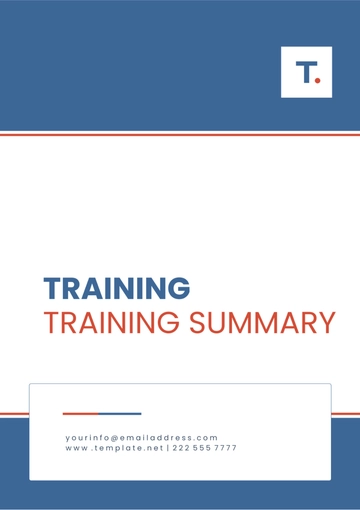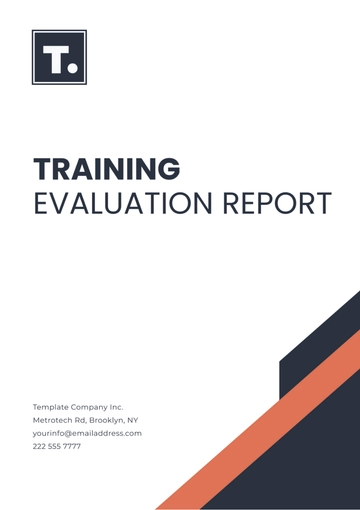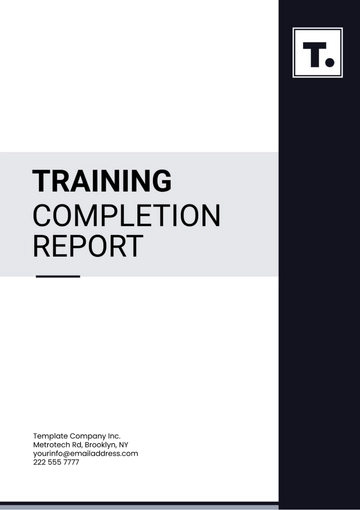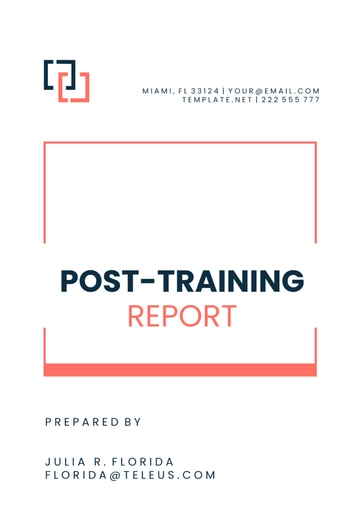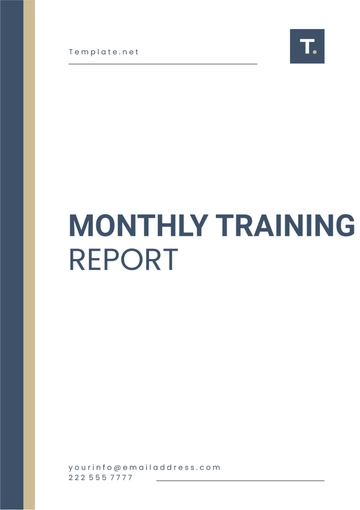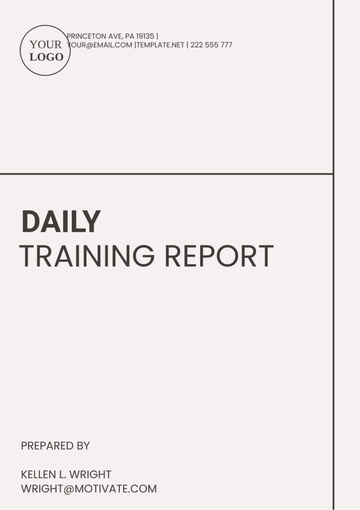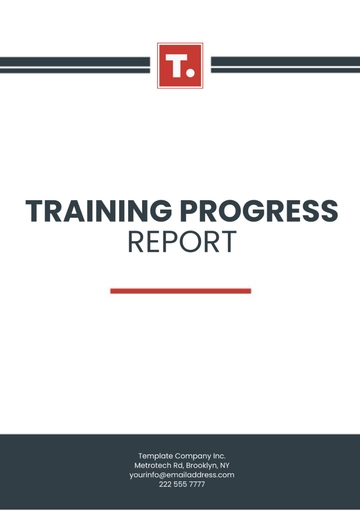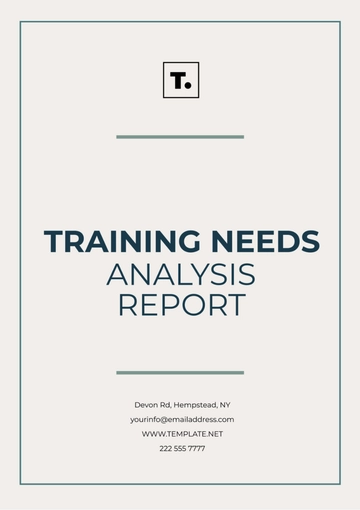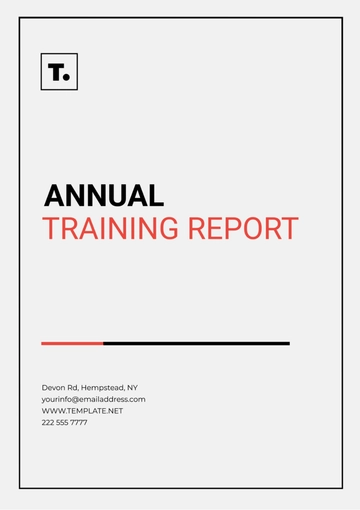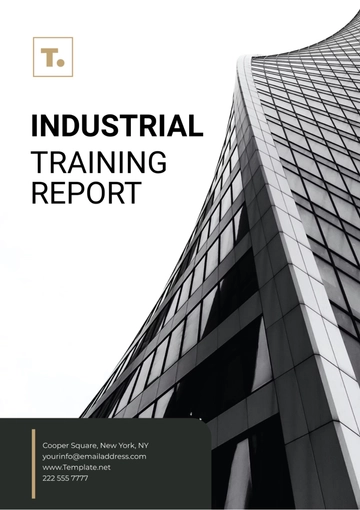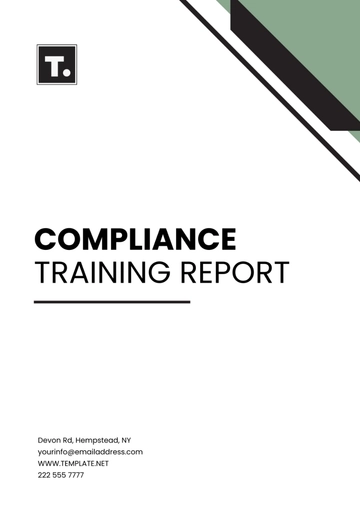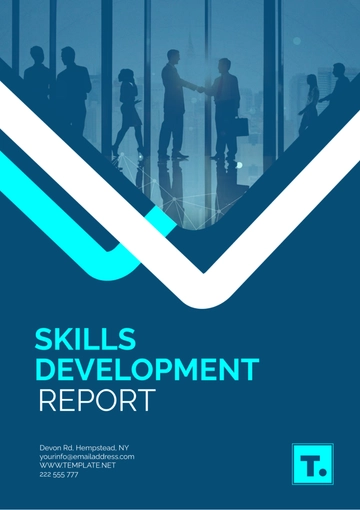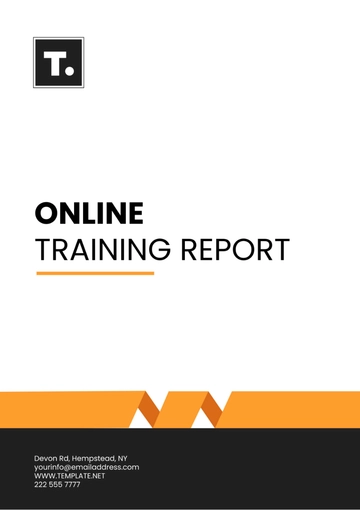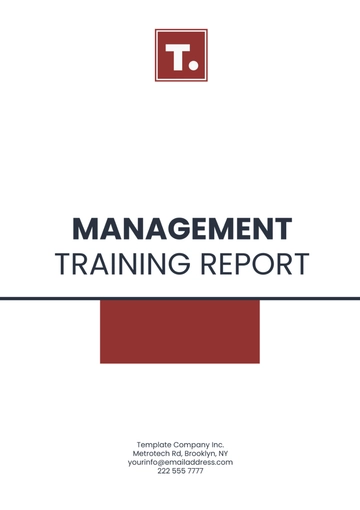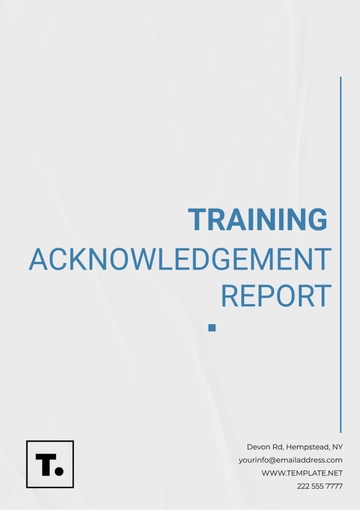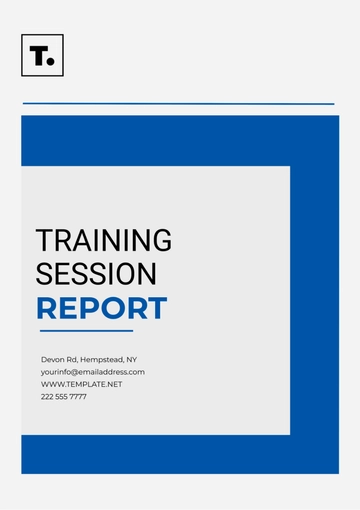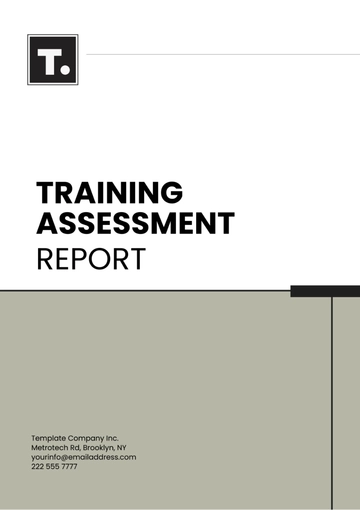Free Annual Training Report
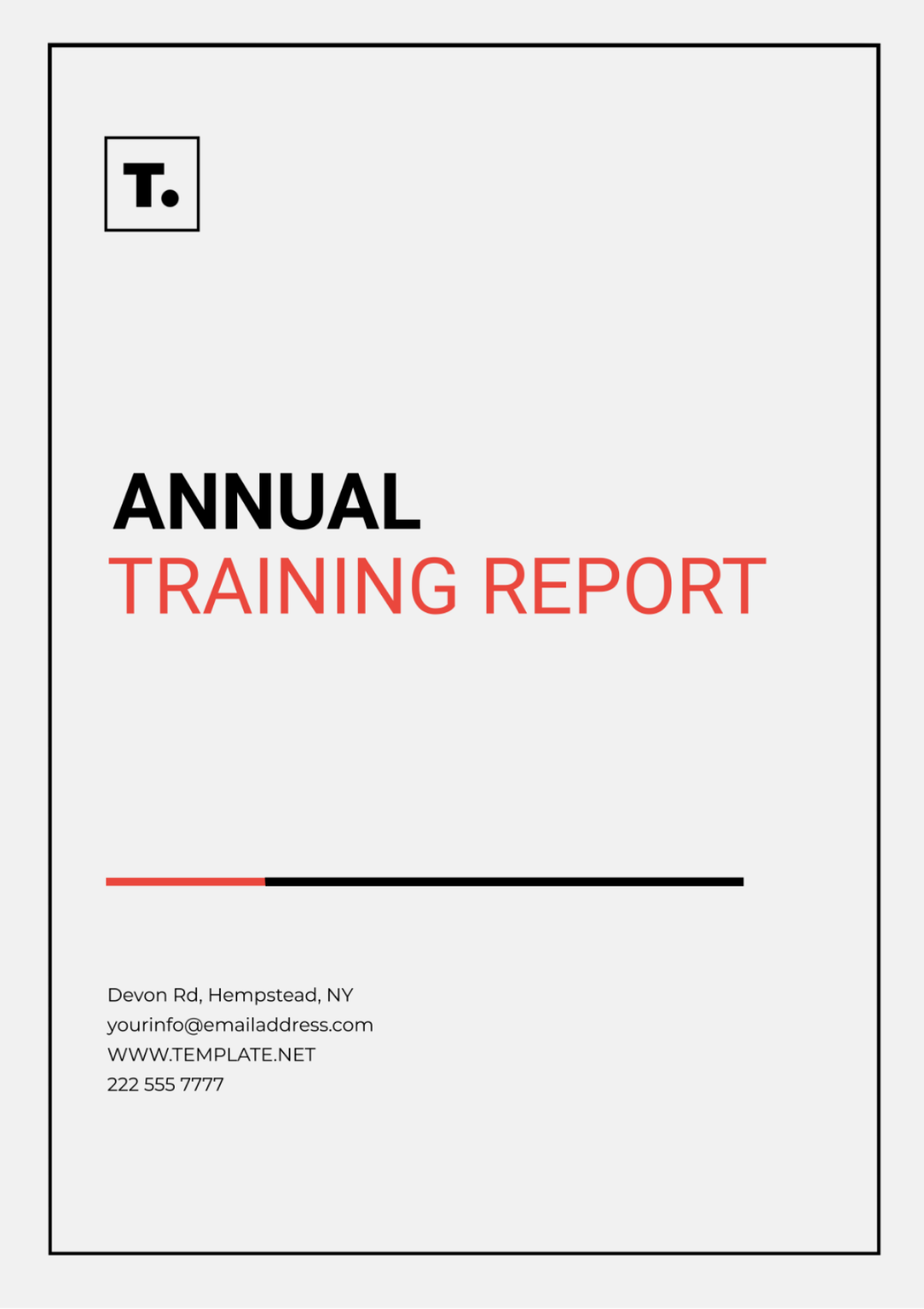
I. Introduction
This Annual Training Report provides an overview of the training activities conducted by [YOUR COMPANY NAME] throughout the year 2050. The report aims to evaluate the effectiveness of our training programs in enhancing employee performance and development.
II. Executive Summary
In 2050, [YOUR COMPANY NAME] prioritized employee development through a range of training initiatives. A total of 45 training programs were conducted, covering various areas such as Leadership Development, Digital Skills, and Diversity & Inclusion. These programs aimed to improve employee skills, knowledge, and overall performance.
III. Training Programs Overview
Date | Participants | Objective | Outcomes |
|---|---|---|---|
March 15-16 | 30 | Enhance leadership skills and strategic thinking | Increased confidence in decision-making, improved team collaboration |
June 20-22 | 50 | Enhance digital literacy and proficiency | Improved efficiency in utilizing digital tools, increased innovation |
September 10 | 80 | Foster an inclusive workplace culture | Increased awareness of diversity issues, improved teamwork |
IV. Performance Evaluation
The effectiveness of our training programs was evaluated based on various metrics, including:
Participant Feedback: Positive feedback was received, indicating high satisfaction levels.
Performance Metrics: 20% improvement in key performance indicators post-training.
Skills Development: Demonstrated improvement in digital skills and leadership competencies.
V. Future Recommendations
Looking ahead, we recommend the following actions to further enhance our training efforts:
Diversification of Training Topics: Introduce new training programs to address emerging skill requirements.
Technology Integration: Utilize innovative technologies for more interactive and engaging training experiences.
Continuous Evaluation: Implement regular evaluations to ensure the relevance and effectiveness of training programs.
VI. Challenges Faced
Despite our efforts, we encountered several challenges during the implementation of training programs in 2050. These challenges included:
Resource Constraints: Limited budget and staffing resources impacted the scope and scale of training initiatives.
Technological Barriers: Some employees faced challenges in adapting to new technologies introduced in training programs.
Time Constraints: Busy schedules and conflicting priorities hindered full participation in training activities.
VII. Success Stories
Despite challenges, several success stories emerged from our training programs in 2050. These stories highlight the positive impact of training on employee performance, career growth, and organizational success.
Employee Name | Training Program | Success Story |
|---|---|---|
[EMPLOYEE NAME] | Digital Skills Training | Became proficient in using advanced analytics software, which enabled her to analyze marketing data more effectively, resulting in a 30% increase in campaign ROI. |
[EMPLOYEE NAME] | Leadership Development | Implemented new strategies to motivate his team and resulted in a 25% increase in sales performance within his department. |
[EMPLOYEE NAME] | Diversity & Inclusion | Spearheaded a Diversity & Inclusion initiative in the HR department and implemented new hiring practices that increased diversity within the organization by 40%. |
VIII. Budget Allocation
A breakdown of the budget allocated for training activities in 2050 is provided below:
Item | Amount |
|---|---|
Training Program Costs | $150,000 |
Technology Investments | $50,000 |
Staffing Expenses | $80,000 |
IX. Conclusion
In conclusion, the training initiatives undertaken by [YOUR COMPANY NAME] in 2050 have played a crucial role in fostering employee development and enhancing organizational performance. By addressing challenges, leveraging success stories, and continuing to invest in training, we are poised for continued growth and success in the future.
- 100% Customizable, free editor
- Access 1 Million+ Templates, photo’s & graphics
- Download or share as a template
- Click and replace photos, graphics, text, backgrounds
- Resize, crop, AI write & more
- Access advanced editor
Get your Annual Training Report Template from Template.net. This fully customizable and editable template simplifies your reporting process, ensuring professionalism and accuracy. With the integrated AI Editor Tool, creating detailed and visually appealing training reports has never been easier. Perfect for businesses seeking efficient documentation, this template will meet your training reporting needs.
You may also like
- Sales Report
- Daily Report
- Project Report
- Business Report
- Weekly Report
- Incident Report
- Annual Report
- Report Layout
- Report Design
- Progress Report
- Marketing Report
- Company Report
- Monthly Report
- Audit Report
- Status Report
- School Report
- Reports Hr
- Management Report
- Project Status Report
- Handover Report
- Health And Safety Report
- Restaurant Report
- Construction Report
- Research Report
- Evaluation Report
- Investigation Report
- Employee Report
- Advertising Report
- Weekly Status Report
- Project Management Report
- Finance Report
- Service Report
- Technical Report
- Meeting Report
- Quarterly Report
- Inspection Report
- Medical Report
- Test Report
- Summary Report
- Inventory Report
- Valuation Report
- Operations Report
- Payroll Report
- Training Report
- Job Report
- Case Report
- Performance Report
- Board Report
- Internal Audit Report
- Student Report
- Monthly Management Report
- Small Business Report
- Accident Report
- Call Center Report
- Activity Report
- IT and Software Report
- Internship Report
- Visit Report
- Product Report
- Book Report
- Property Report
- Recruitment Report
- University Report
- Event Report
- SEO Report
- Conference Report
- Narrative Report
- Nursing Home Report
- Preschool Report
- Call Report
- Customer Report
- Employee Incident Report
- Accomplishment Report
- Social Media Report
- Work From Home Report
- Security Report
- Damage Report
- Quality Report
- Internal Report
- Nurse Report
- Real Estate Report
- Hotel Report
- Equipment Report
- Credit Report
- Field Report
- Non Profit Report
- Maintenance Report
- News Report
- Survey Report
- Executive Report
- Law Firm Report
- Advertising Agency Report
- Interior Design Report
- Travel Agency Report
- Stock Report
- Salon Report
- Bug Report
- Workplace Report
- Action Report
- Investor Report
- Cleaning Services Report
- Consulting Report
- Freelancer Report
- Site Visit Report
- Trip Report
- Classroom Observation Report
- Vehicle Report
- Final Report
- Software Report

